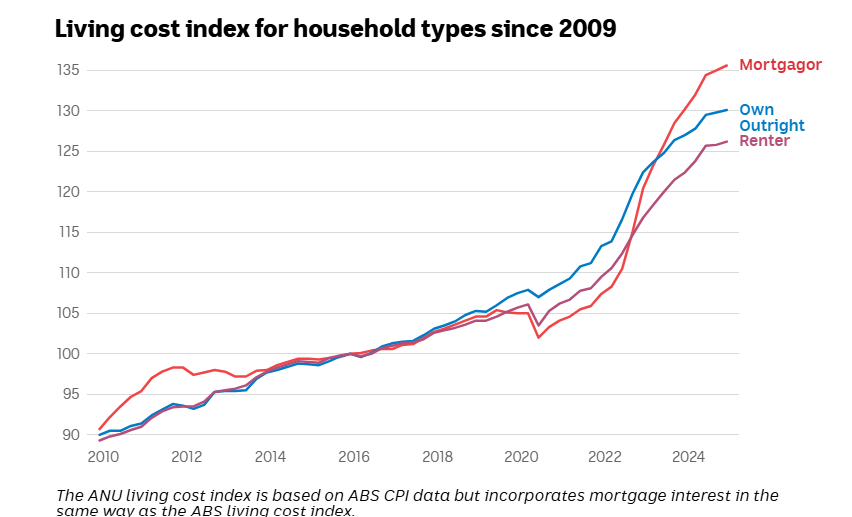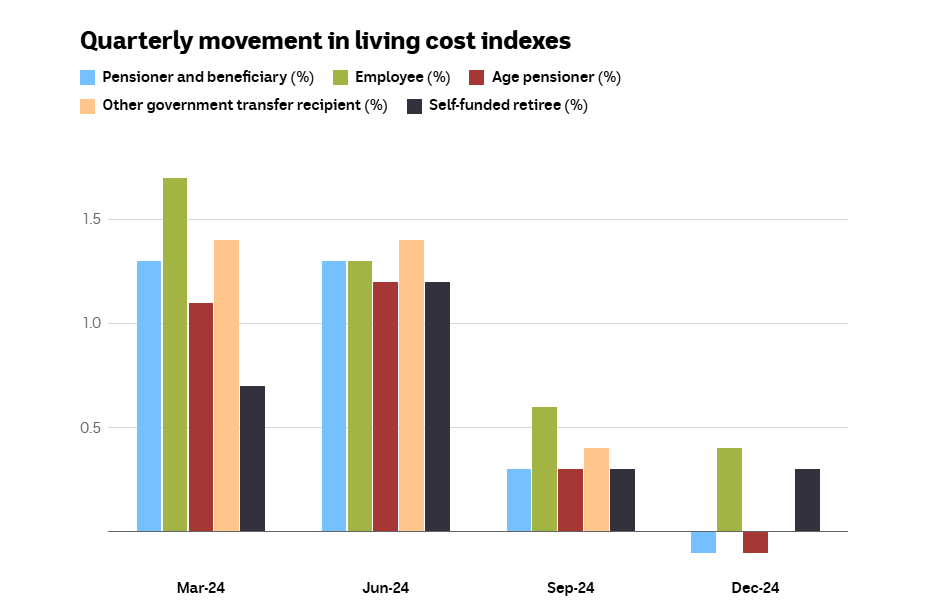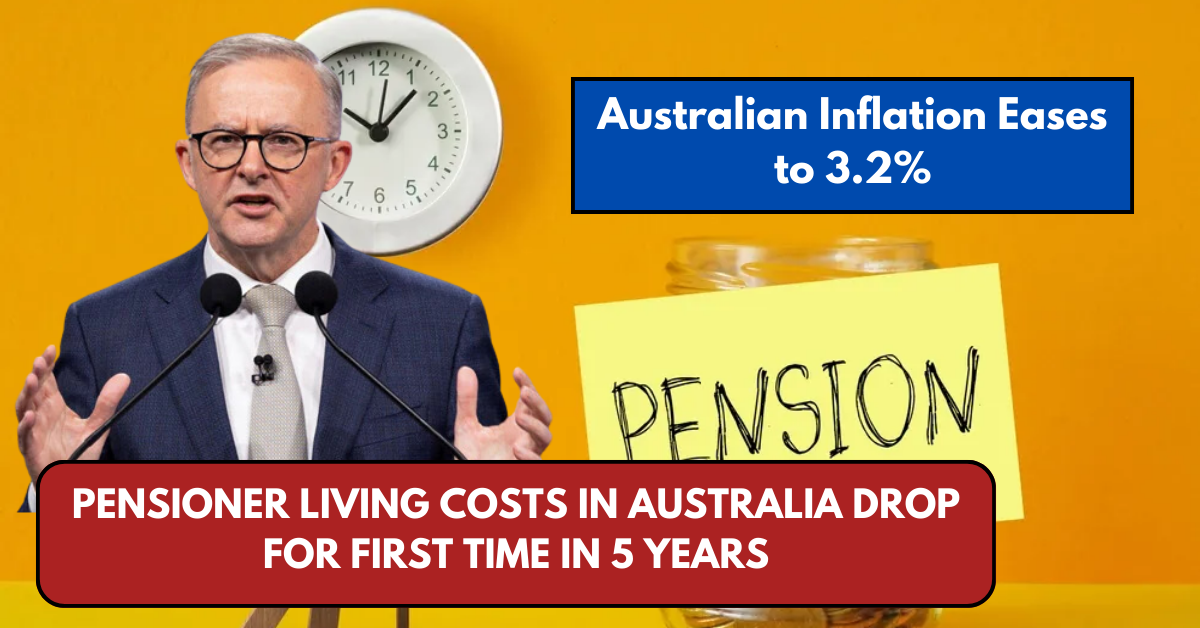For the first time since 2020, pensioners in Australia are seeing a slight drop in their cost of living. According to a report from the Australian Bureau of Statistics (ABS), pensioner households experienced a 0.1% decline in expenses during the December 2024 quarter.
This drop in living costs is a rare event, as pensioners have faced rising expenses for years due to higher inflation, rent, and healthcare costs. But with government assistance programs and falling energy prices, pensioners are finally getting some relief.
Let’s take a closer look at what caused this decline, how it compares to other household groups, and whether this relief will last.

Why Have Pensioner Living Costs Declined?
The recent fall in pensioner expenses is mainly due to government relief programs and lower electricity prices. Here are the key reasons behind the decline:
1. Government Energy Bill Relief
The Commonwealth Energy Bill Relief Fund has provided financial support to pensioners by reducing electricity bills. Many pensioners have received discounts and rebates on their energy costs, which has helped them manage their household expenses better.
2. Increase in Rent Assistance
The government increased Commonwealth Rent Assistance (CRA) by 10% in September 2024. This has helped many pensioners who depend on government support to afford rent. While rent prices remain high, this additional assistance has eased some financial pressure.
3. Lower Healthcare Costs
Many pensioners have reached the safety net threshold of the Pharmaceutical Benefits Scheme (PBS). This means that they pay less for essential medicines. Healthcare expenses have always been a significant burden for pensioners, but these changes have helped reduce out-of-pocket costs.
Pensioners Get Relief, But Employee Households Pay More
While pensioners have seen a small reduction in living costs, employee households have faced an increase of 0.4% in the same period.
Why Are Employee Households Struggling?
The main reason is higher mortgage interest rates. Many Australians have moved from fixed-rate home loans to higher variable rates, leading to higher repayments. Unlike pensioners, most working Australians don’t receive government rent assistance and are more affected by interest rate hikes.
In simple terms, government-supported pensioners got financial relief, while working Australians with home loans are still struggling with rising costs.
Inflation Has Dropped, But Some Costs Are Still Rising
The decline in pensioner living costs is linked to falling inflation rates.
- Australia’s inflation rate was recorded at 3.2% in December 2024, which is lower than previous years.
- This has helped bring down the cost of essentials like electricity and fuel.
However, not all costs have gone down. Some expenses, such as groceries and certain services, are still rising. So, while pensioners are benefiting from a slight reduction in costs, they still need to manage their budgets carefully.
Comparison of Living Costs Across Household Groups
Not all households are experiencing lower living costs. Here’s how different groups are affected:
| Household Type | Change in Living Costs (Dec 2024) | Main Reason for Change |
|---|---|---|
| Pensioner Households | -0.1% | Energy bill relief, rent assistance |
| Employee Households | +0.4% | Higher mortgage interest rates |
| Self-Funded Retirees | +2.5% (annual) | Limited government support |
This table shows that government support is crucial in keeping pensioner living costs lower.

Will This Relief Last? Concerns for 2025
Even though pensioners are getting some relief, experts warn that this may not last long.
1. Energy Bill Relief Will End in June 2025
The Commonwealth Energy Bill Relief Fund is set to expire on June 30, 2025. Once it ends, pensioners may face higher electricity costs again.
2. Interest Rate Decisions Could Impact Prices
The Reserve Bank of Australia (RBA) will review interest rates in mid-February 2025. If rates stay high, it could affect overall inflation, making life more expensive again.
3. Future Pension Adjustments
Pension payments are adjusted based on the Pensioner and Beneficiary Living Cost Index (PBLCI). Since PBLCI increased by 2.8% in 2024, pensioners may see modest increases in payments in 2025.
However, this may not be enough to fully cover future cost increases if inflation picks up again.
Final Thoughts
The 0.1% drop in pensioner living costs is a rare but positive development for those relying on government payments. Energy rebates, rental assistance, and lower healthcare costs have played a big role in this change.
However, this relief is likely temporary, as government support programs will expire in mid-2025.
To stay financially secure, pensioners should:
- Plan ahead for future expenses
- Take advantage of available government assistance
- Monitor upcoming pension adjustments
While this decline in living costs is good news, pensioners should remain prepared for future changes in government policies and inflation rates.
This article has been carefully fact-checked by our editorial team to ensure accuracy and eliminate any misleading information. We are committed to maintaining the highest standards of integrity in our content.

Filza specializes in simplifying financial topics for everyday readers. Whether breaking down Canada’s tax guides or U.S. benefits like SNAP and VA Disability, Filza’s relatable writing style ensures readers feel confident and informed. Follow her insights on LinkedIn or reach out via email at [email protected].




